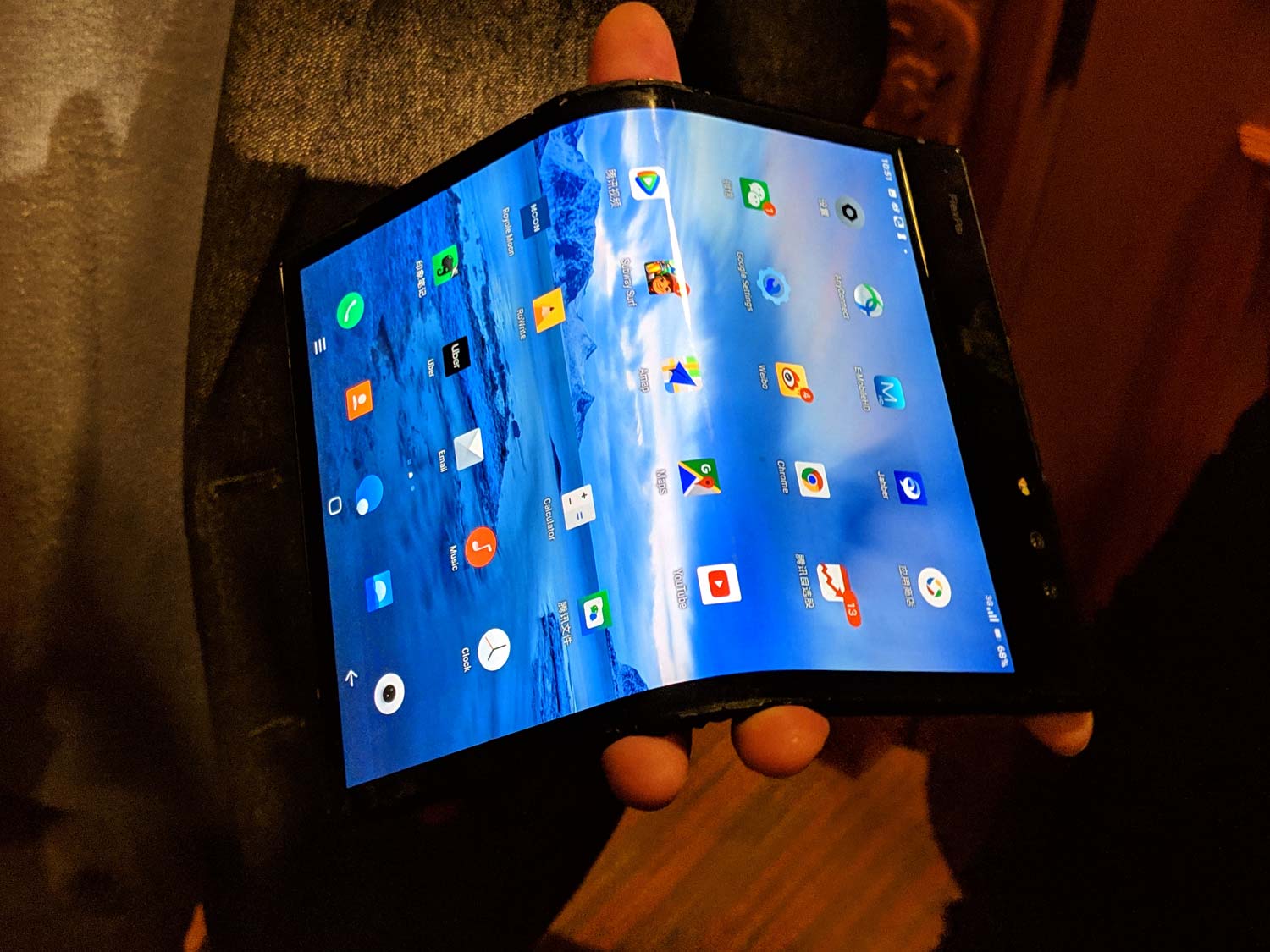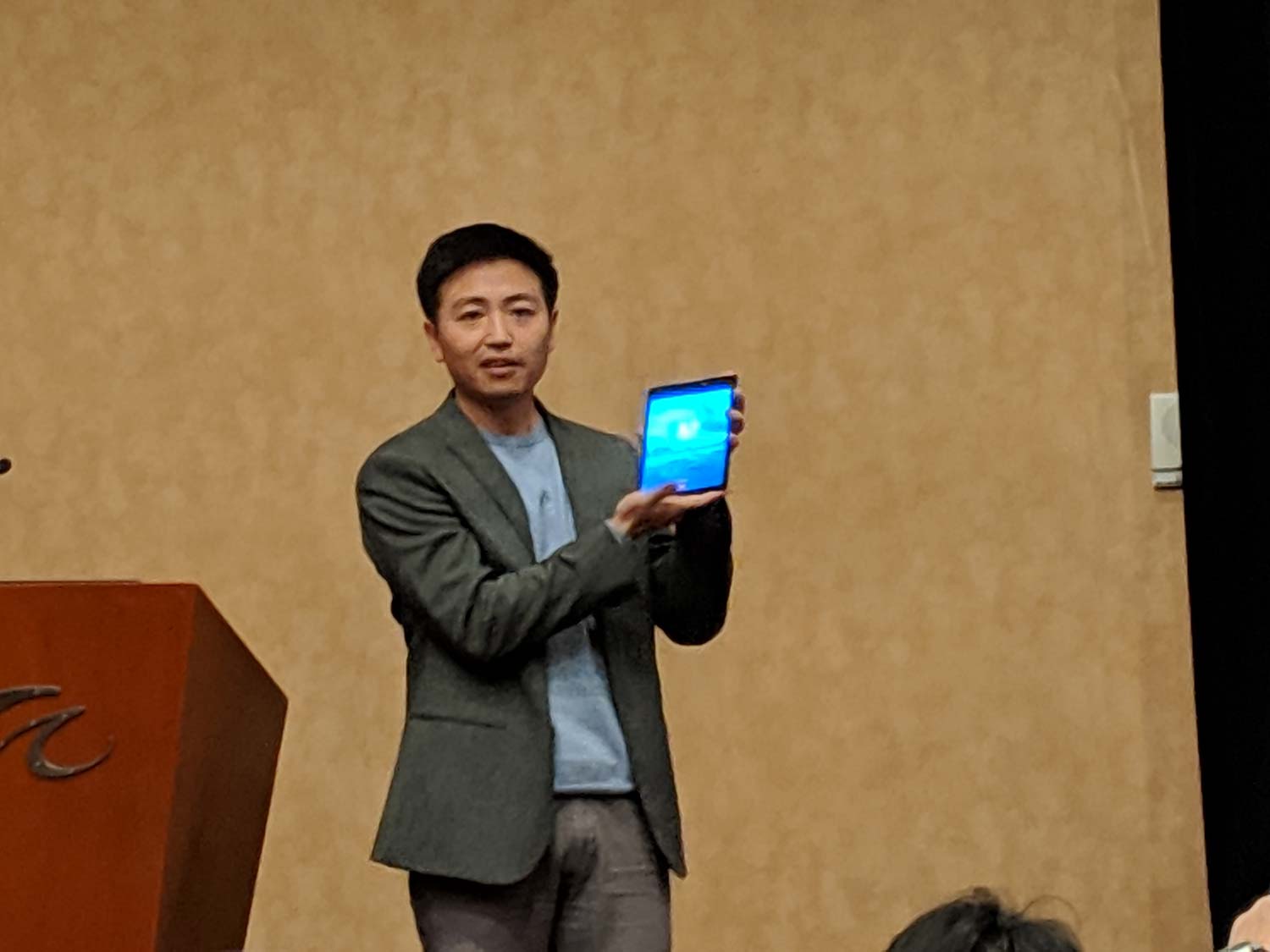The Foldable FlexPai Phone Arrives at CES
Royole's foldable FlexPai debuted last October, but CES provided our first up-close look at the 7.8-inch tablet that can fold into a pocket-sized handset.
LAS VEGAS — Royole has appeared at the CES trade show, but probably never to a room as crowded as the one greeting CEO Bill Liu today (Jan. 7).
The interest is understandable. After all, Royole created a stir in late October when it announced it was selling an actual foldable smartphone, the $1,318 FlexPai. By announcing the phone and then launching sales a few days later, Royole beat a number of big phone makers to the punch as they work to develop their own folding smartphones, including Samsung, which has since teased its own Infinity Flex display-based phone (though we're still waiting for a final name, price and launch date.)
Since the FlexPai was introduced at a Beijing event, today's Royole press conference at CES was the first chance to see the foldable phone in action. To that end, Royole didn't disappoint — after running through his company's six-year-plus history and detailing its vision for foldable electronics, Liu produced the FlexPai and proceeded to show how it could fold from a 7.8-inch tablet into a double-sided smartphone.

The FlexPai looks more impressive in person than it did in the launch video from Beijing, suggested that Royole has maybe had more time to polish the product in the two months since its debut. The phone seemed to fold easily enough during Liu's demo, and the Royole executive even showed it launching apps and taking pictures.
MORE: All the Incoming Foldable Phones for 2019
Anyone hoping for extensive hands-on time with the FlexPai went away disappointed, as Royole executives kept a close watch on just who handled the phone and for what purpose. Royole is promising CES attendees a chance to see the device up close once the trade show floor opens up later this week, and we've got an appointment scheduled, so we hope to update this story soon with some of our own impressions from handling the FlexPai.
For the most part, today's FlexPai demo recapped a lot of what we already know about Royole's foldable phone. It will run on Qualcomm's recently unveiled Snapdragon 855 chipset, and it runs a version of Android called Water OS that supports features like split-screen mode.
Sign up to get the BEST of Tom's Guide direct to your inbox.
Get instant access to breaking news, the hottest reviews, great deals and helpful tips.
The FlexPai sports two cameras — a 20-megapixel main shooter and a 16-MP wide-angle lens — that work as both the rear and front camera depending on how you've got the phone folded. That's fewer cameras you'll find on most smartphones these days, as phone makers pack in four or five lenses to help differentiate their handsets.
"Less is more, right?" Liu joked.

But a few new details emerged about the FlexPai during today's demo. When folded, the phone offers two screens — one with a 16:9 aspect ratio and the other with the wider 18:9 ratio favored by a lot of phone users these days. Because the FlexPai supports dual SIM cards, you're potentially carrying around two phones, each with their own individual screen.
In addition to showing off the FlexPai in public, Royole is also hoping to make the case for foldable smartphones, devices that some observers (OK, me) have called a solution in search of a problem. Royole argues that a foldable phone resolves the conflict users have between portability and an expansive display that lets them get more work done. Liu also said the FlexPai can address user complaints such as durability and charging speed — the latter handled by the phone's support for fast charging — and touts his company's device as the next step in the evolution of smartphones.
"Let's unfold the next decade with FlexPai," Liu told CES attendees.
The FlexPai is just one example of Royole's interest in foldable, flexible electronics that include sensors that aren't impacted by surfaces that fold, roll, bend and curve. Among the other products Royole has developed include portable keyboards that unfurl, a selfie stick with a flexible sensor on its twistable controller, and wearables with embedded displays that can stream videos from your smartphone.
Image Credits: Tom's Guide
Philip Michaels is a Managing Editor at Tom's Guide. He's been covering personal technology since 1999 and was in the building when Steve Jobs showed off the iPhone for the first time. He's been evaluating smartphones since that first iPhone debuted in 2007, and he's been following phone carriers and smartphone plans since 2015. He has strong opinions about Apple, the Oakland Athletics, old movies and proper butchery techniques. Follow him at @PhilipMichaels.
-
michaelwillcutt973 Never Samsung phones are junk I've owned 6 Samsung's phones first two Verizon couldn't activate, s7 two tabe Es blew up in my hands now to the s7 edge didn't last a year screens colors went wild burned eyes then last s7 battery started smoking burned lungs lithium ion battery's messed up lungs know going to lung doctors to try an fix ,X-ray's looks like snow flakes floating an about to remove three spots on my lungs to test if harmful an them think it is.Reply -
michaelwillcutt973 Made in China well known for lead use in production many port inspectors found lots of products containing lead coming in what they found was loaded back up an refused in America returned to China beware America China will do anything to poison America anything says China test it or have it tested return to company you bought it from with test results. Minister Michael Willcutt.Reply

